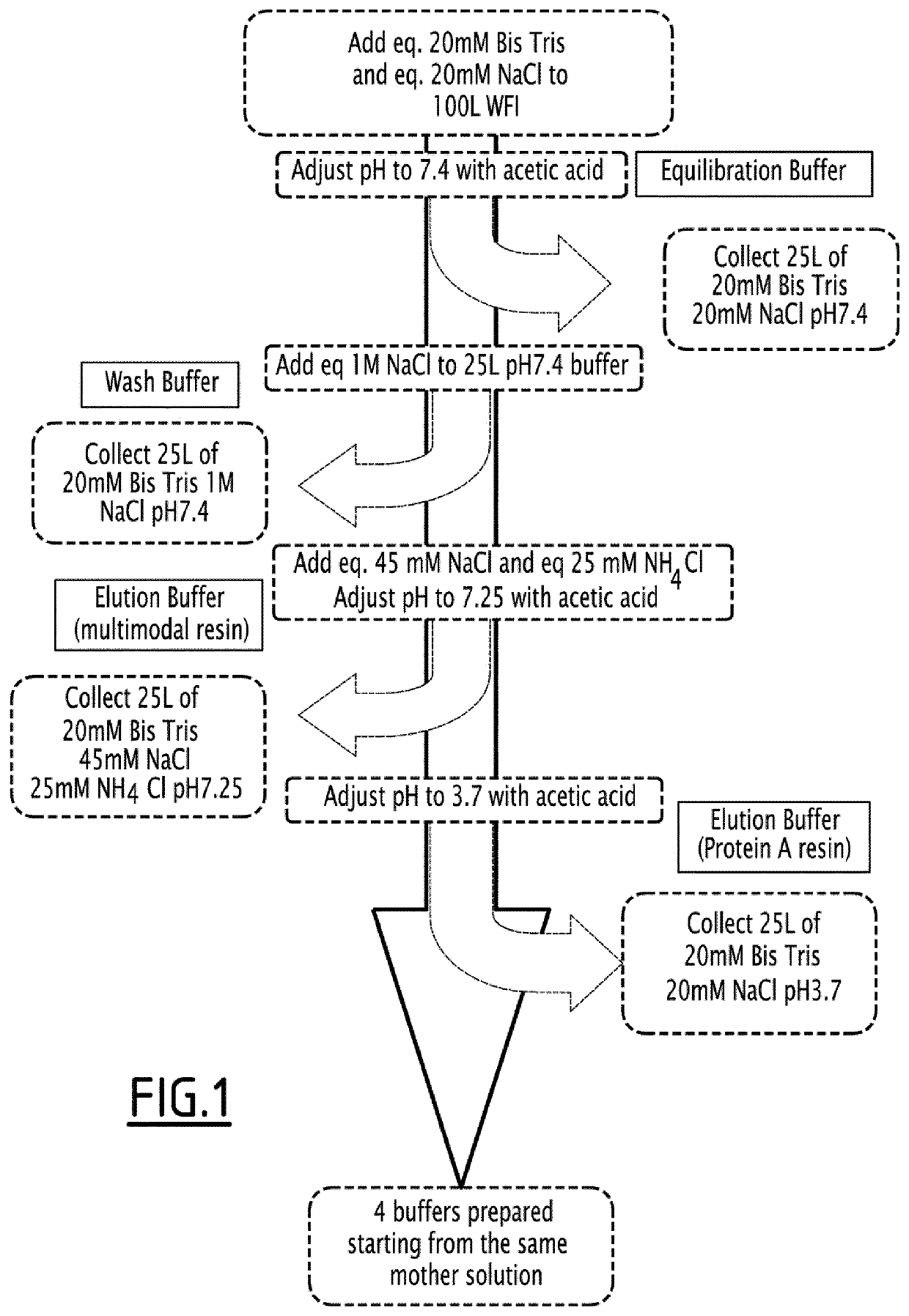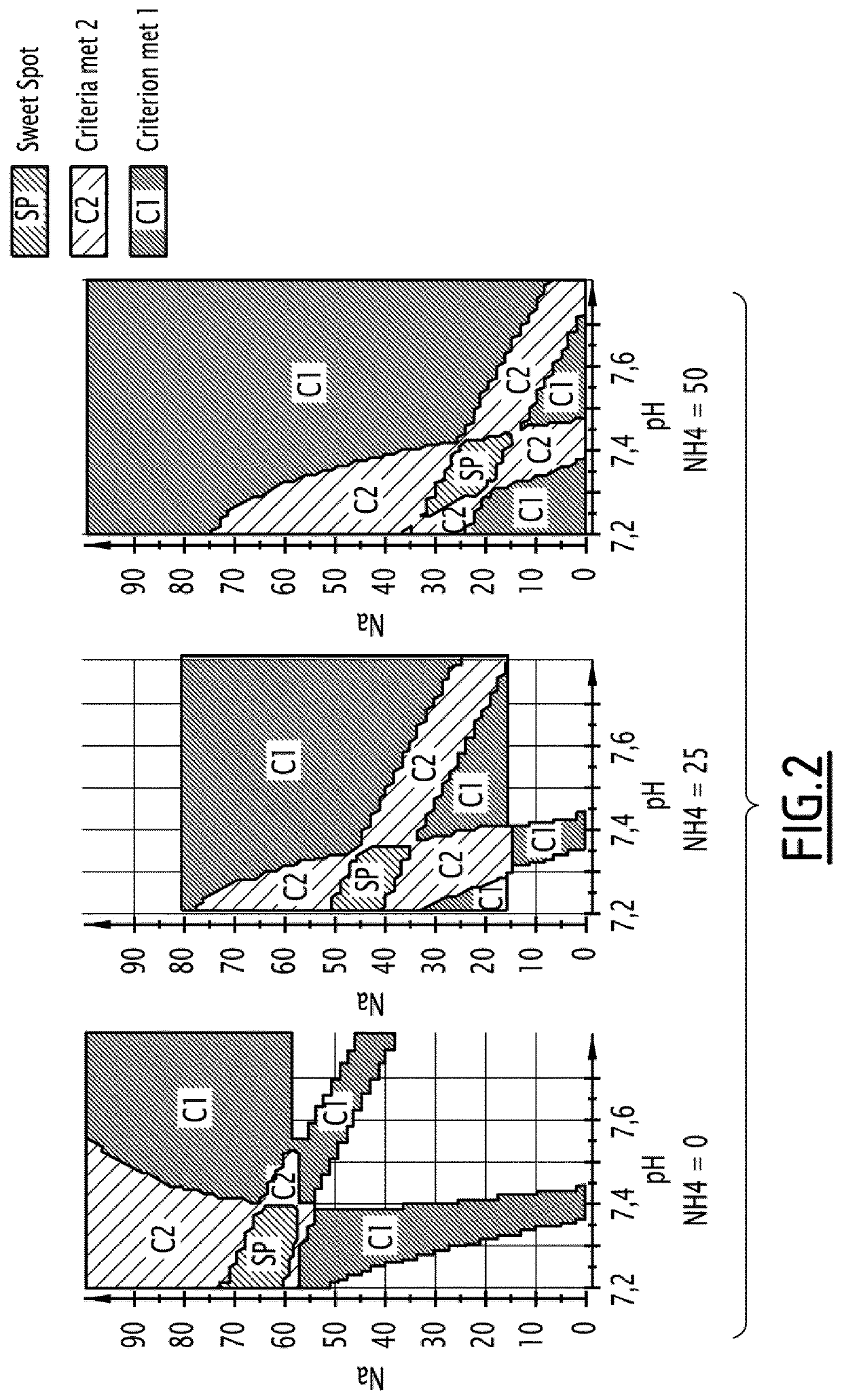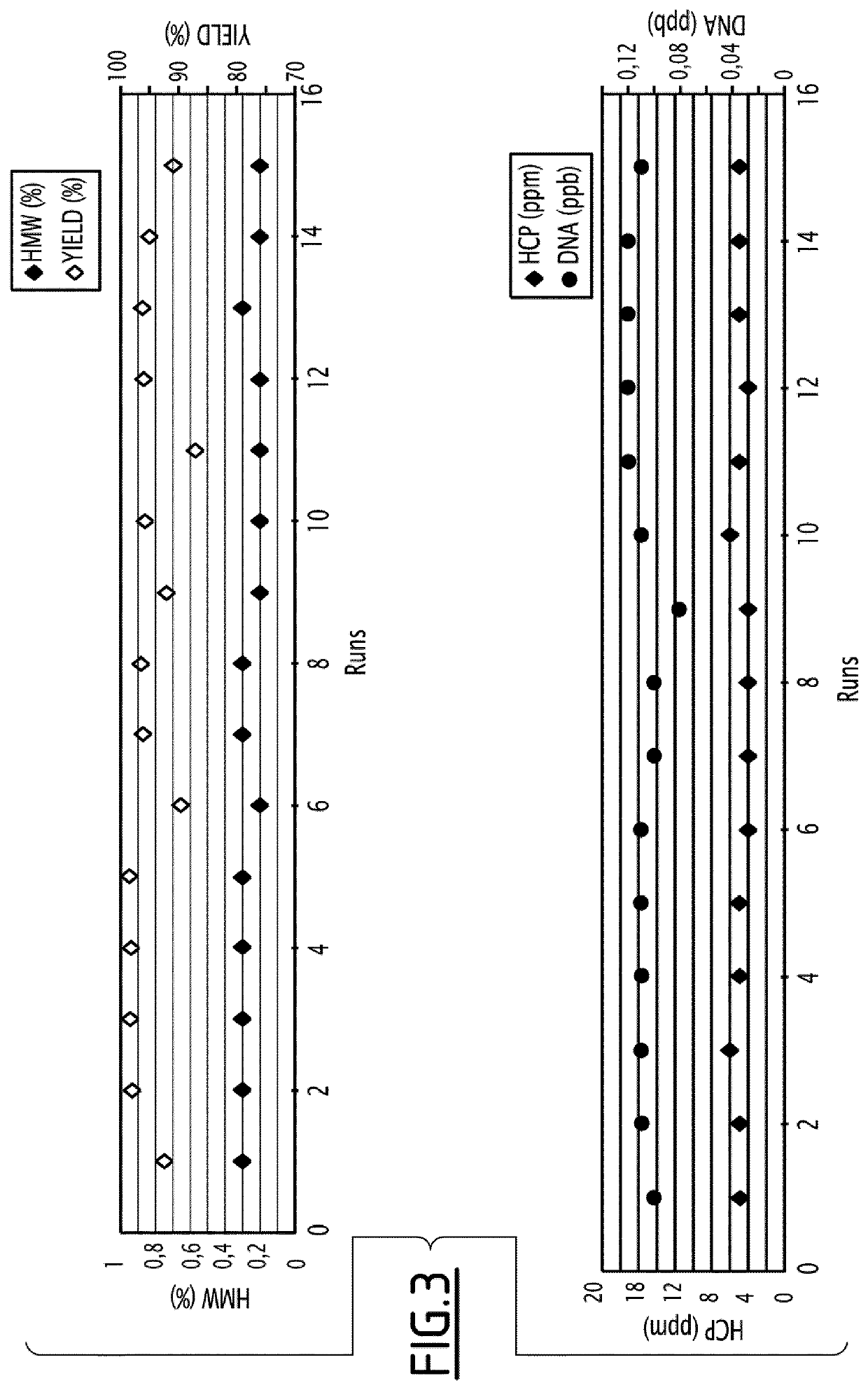Continuous multistep process for purifying antibodies
a multi-step, antibody technology, applied in the direction of immunoglobulins, biomass after-treatment, peptides, etc., can solve the problems of high cost, high cost, and high cost of conventional purification processes, and achieve high automation and/or running efficiency, facilitate supply chain manufacturing and quality control savings, and facilitate the effect of purification
- Summary
- Abstract
- Description
- Claims
- Application Information
AI Technical Summary
Benefits of technology
Problems solved by technology
Method used
Image
Examples
example 1
ion of Purification Buffers
[0332]Bis Tris buffers can advantageously be used as buffers with a multi-modal resin chromatography column.
[0333]The crude protein eluent obtained after passage through a Protein A chromatography column was passed through a Capto MMC multi-modal resin chromatography column.
[0334]This resin is able to fix mAb even at low pH, like those obtained after a chromatography step on a Protein A column. However, this resin also needs salt to obtain a good elution. Nevertheless, a too high concentration of salt is detrimental for mAb stability, since it increases the level of high molecular weight (HMW) species in eluted samples, and is too efficient on impurities fixed on medium, leading to a decreased purity of mAb.
[0335]To avoid these drawbacks, the inventors made a design of experiment (DOE) in order to reduce salt concentration and pH in the elution buffer of step (a).
[0336]To this end, the inventors introduced a new kind of salt, ammonium chloride, which bring...
example 2
ion of the Third Chromatographic Step
[0355]A purification process, in which Sartobind STIC membrane was used as third step, because of its salt tolerant property, in order to polish impurities after the two first chromatographic steps and to remove viruses, was initially designed.
[0356]However, in a continuous process, each step is carried out a plenty of times. Disposable membranes, such as Sartobind STIC membranes, cannot be re-used. The inventors therefore designed an alternative third chromatographic step enabling polishing impurities, removing viruses and being re-usable, which can thus be used in a continuous process.
[0357]Three kinds of media were tested as polishing step:[0358]Sartobind STIC (Sartorius)[0359]Sartobind Q (Sartorius), and[0360]BioPro Q75 (YMC), an AEX resin.
[0361]First, the inventors tested these resins after a Capto MMC elution (100 mM NaCl, 20 mM Bis Tris pH 8.0) to evaluate the ability of the third step to remove impurities even with 100 mM NaCl conditions....
example 3
on of Purification Buffers
[0366]The three-step purification method described herein utilizes four buffers: an equilibration buffer, a wash buffer, and two elution buffers, all prepared from the same mother solution. A schematic of the protocol is shown in FIG. 1 and is as follows: eq. 20 mM Bis Tris and eq. 20 mM NaCl were brought up to 100 L water for injection (WFI) as the mother solution, and the pH of the solution was then adjusted to 7.4 using acetic acid. 25 L of the resulting solution was then collected and stored as the equilibration buffer. 25 L of the mother solution was then removed and eq. 1M NaCl was added. This resulting 25 L solution was the wash buffer. The pH of 25 L of the mother solution was then adjusted to 3.7 with acetic acid. This resulting 25 L solution was the first elution buffer. The remaining 25 L of the mother solution was then pH adjusted to 7.25 using acetic acid, and eq. 45 mM NaCl and eq. 25 mM NH4Cl were added, resulting in the other elution buffer....
PUM
| Property | Measurement | Unit |
|---|---|---|
| pH | aaaaa | aaaaa |
| pH | aaaaa | aaaaa |
| pH | aaaaa | aaaaa |
Abstract
Description
Claims
Application Information
 Login to View More
Login to View More - R&D
- Intellectual Property
- Life Sciences
- Materials
- Tech Scout
- Unparalleled Data Quality
- Higher Quality Content
- 60% Fewer Hallucinations
Browse by: Latest US Patents, China's latest patents, Technical Efficacy Thesaurus, Application Domain, Technology Topic, Popular Technical Reports.
© 2025 PatSnap. All rights reserved.Legal|Privacy policy|Modern Slavery Act Transparency Statement|Sitemap|About US| Contact US: help@patsnap.com



